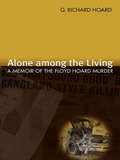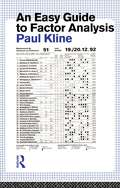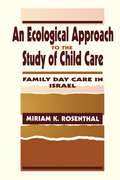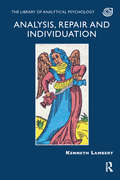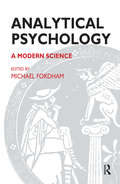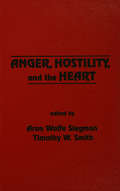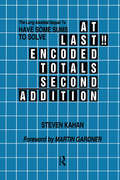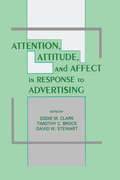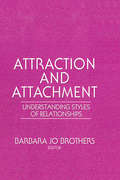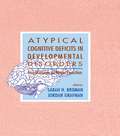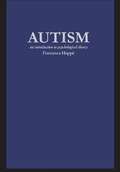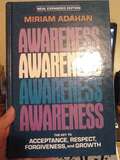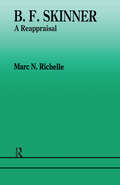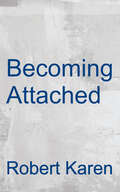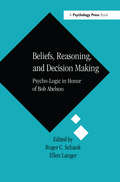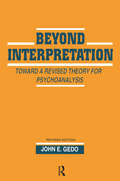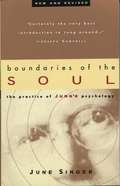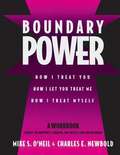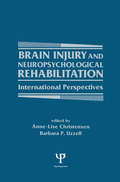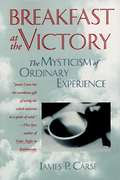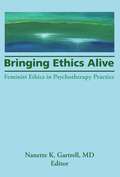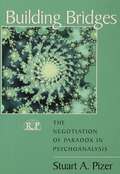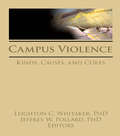- Table View
- List View
Alone among the Living: A Memoir of the Floyd Hoard Murder
by G. Richard HoardThe son of a Georgia prosecutor killed by a car bomb offers a &“compelling&” account of the crime and its effect on his life (Booklist). When I was twenty I came face to face with the old man convicted of paying five thousand dollars for the murder of my father. From the gripping first line of this true story, you will follow a young man&’s journey through grief and despair to acceptance and forgiveness. On August 7, 1967, prosecutor Floyd &“Fuzzy&” Hoard was killed by a car bomb in his own front yard in Jackson County, Georgia. Summoning the memories of the events surrounding that day, Alone among the Living is G. Richard Hoard's remembrance of the father he lost on that day, and of his subsequent struggle to come to terms with the murder. &“A chronicle of grief and anger and confusion as Hoard tries to come of age without his father's help…A compelling story of loss, acceptance, and forgiveness.&”—Booklist &“He writes of the universal struggle to make sense of a world that often seems ruled by chaos and to find one&’s place in it.&”—Athens Banner-Herald
An Easy Guide to Factor Analysis
by Paul KlineFactor analysis is a statistical technique widely used in psychology and the social sciences. With the advent of powerful computers, factor analysis and other multivariate methods are now available to many more people. An Easy Guide to Factor Analysis presents and explains factor analysis as clearly and simply as possible. The author, Paul Kline, carefully defines all statistical terms and demonstrates step-by-step how to work out a simple example of principal components analysis and rotation. He further explains other methods of factor analysis, including confirmatory and path analysis, and concludes with a discussion of the use of the technique with various examples.An Easy Guide to Factor Analysis is the clearest, most comprehensible introduction to factor analysis for students. All those who need to use statistics in psychology and the social sciences will find it invaluable. Paul Kline is Professor of Psychometrics at the University of Exeter. He has been using and teaching factor analysis for thirty years. His previous books include Intelligence: the psychometric view (Routledge 1990) and The Handbook of Psychological Testing (Routledge 1992).
An Ecological Approach To the Study of Child Care: Family Day Care in Israel
by Miriam K. RosenthalA new type of childhood is experienced these days by many children in industrial societies that provide child care services. The studies summarized in this book stem from a conceptual model based on an ecological approach to the study of development. The family day care system in Israel is presented as a "case study" for the discussion of issues derived from this conceptual model -- issues which are of central concern to the investigation of child care in any society. This book establishes how historical and socio-economic processes: *influence the values and goals set by the society for its children, and its social policy concerning child care service; *are interpreted by parents and early childhood educators; *relate to different definitions of "quality care." Unique in its integrative analysis of the daily experiences of infants and toddlers in family day care, this volume examines cultural and social policy issues, family background and parental beliefs, caregiver's background and beliefs, the nature of the child care environment, and the child's personal characteristics. Its "theoretical" and "applied" orientation is important to researchers interested in the study of out-of-home-care for young children, as well as educators, developmental psychologists, sociologists, and social workers interested in the study of environmental influences on the child development. The ecological model and the applied implications of the study are of special relevance to practitioners in the field of early childhood.
Analysis, Repair and Individuation (The\library Of Analytical Psychology Ser.)
by Kenneth LambertAn exposition on individuation including 'Archetypes, Individuation and Internal Objects' and 'The Individuation Process'
Analytical Psychology: A Modern Science (The\library Of Analytical Psychology Ser.)
by Michael FordhamThis is a book of two parts: the first focuses on theoretical concepts with special reference to the structure of the psyche, while the second includes more clinical material. Both exemplify the London Society's interest in childhood and the development of ideas about the use of reductive analysis within the Jungian framework.
Anger, Hostility, and the Heart
by Timothy W. Smith Aron Wolfe SiegmanResearch on the roles played by hostility and anger in the etiology and course of coronary heart disease (CHD) has mushroomed. Moreover, there has been considerable progress in the knowledge of neurohormonal correlates of anger and hostility that could conceivably play a role in the pathogenesis of CHD. The editors of this volume believe that this is the appropriate time in the history of coronary-prone behavior research to take stock -- to identify the basic questions that need further elucidation, and to provide future direction. Although there is a surprising consensus among the contributors about the nature of the critical issues, they each offer a somewhat different perspective. This book will provide a variety of perspectives on what is known and what still needs to be known -- a useful source for promising research hypotheses.
Archetypal Dimensions of the Psyche
by Marie-Louise von FranzThe chief disciple of C. G. Jung, analyst Marie-Louise von Franz uses her vast knowledge of the world of myths, fairy tales, visions, and dreams to examine expressions of the universal symbol of the Anthropos, or Cosmic Man--a universal archetype that embodies humanity's personal as well as collective identity. She shows that the meaning of life--the realization of our fullest human potential, which Jung called individuation--can only be found through a greater differentiation of consciousness by virtue of archetypes, and that ultimately our future depends on relationships, whether between the sexes or among nations, races, religions, and political factions.
At Last!! Encoded Totals Second Addition: The Long-awaited Sequel to Have Some Sums to Solve
by Steven KahanHow long have you been thirsting for tempting, tantalizing teasers, craving for challenging cryptographic conundrums? A sequel to ""Have Some Sums to Solve"", this work can satiate the desires of even the most prolific puzzle enthusiast.
Attention and Emotion: A Clinical Perspective (Psychology Press And Routledge Classic Editions Ser.)
by Gerald Matthews Adrian WellsThis text critically reviews the literature on attention and emotion, and offers an integrative cognitive attentional model of the development and maintenance of emotional disorders. It highlights the similarities and differences between disorders and offers specific new treatment implications. The book contains numerous summary sections so that readers less familiar with the cognitive literature can follow the main issues without being overwhelmed. The central aims of this work are: to review critically models of attention and their application to attentional processes in emotional disorders; To develop an integrative theoretical framework and model for conceptualizing attentional processes associated with the aetiology and maintenance of emotional stress reactions; and to discuss the implications for clinical practice of attentional theories of emotional dysfunction.
Attention, Attitude, and Affect in Response To Advertising
by David W. Stewart Timothy C. Brock Eddie M. ClarkLinked from the days of their origins, psychology and advertising developed as independent disciplines at almost the same time in the late nineteenth century. Providing an important arena in which psychologists have tested methods and theories, advertising has been a stimulus for research and development in such diverse specialties as learning and behavioral decision theory, psychometrics, perception, and social and mathematical psychology. Psychology, in turn, has contributed a wide assortment of tools, theories, and techniques to the practice of advertising. These contributions have found their place in virtually all areas of advertising practice -- stimulating creativity, evaluating the creative product, and informing the scheduling of media. Purposely eclectic, this volume presents new issues in consumer psychology and advertising such as the relationship between gender differences, cortical organization and advertising; new approaches to old issues such as attention as an epiphenomenon, and meta-analysis of comparative advertising research; and new applications of consumer psychology to other fields such as examining health behavior as consumer behavior, affect and political advertising, and the relationship between advertising and eating disorders. This volume is the result of the Sixth Annual Advertising and Consumer Behavior Conference, which was designed to bring together researchers and practitioners from both psychology and advertising. Chapter contributions are made by professionals in advertising and marketing, professors in psychology and marketing departments, and psychologists who consult for advertising and marketing organizations. Thus, the chapters represent a microcosm of the type of interaction that has characterized the interface of psychology and advertising for more than a hundred years.
Attraction and Attachment: Understanding Styles of Relationships
by Barbara Jo BrothersHere is a fascinating exploration of the powerful forces of attachment and attraction that determine the formation and styles of couples’relationships. What factors attract one person to another? What determines whether or not a healthy relationship is formed? As therapists know, there is much in this world that passes for love but is really the result of leftover dependency needs and unresolved attachment issues. Attraction and Attachment: Understanding Styles of Relationships examines issues of attachment in relationships, discusses the validity of the concept of codependency as one aspect of attachment, and explores various aspects of attraction.The contributing authors consider some of the many styles of relationships that are called love and examine some of the basic sources of attraction. Attraction and Attachment includes an in-depth evaluation of the concept of codependency, a review of the literature on attraction, methods for achieving equilibrium in sexual intimacy, and some of Virginia Satir’s insights on fear and making changes. Just a few of the specific topics explored in these important chapters include: the relationship of childhood attachment experiences and successful long-term marriages the influence of therapists’implicit philosophies on treatment options and their effectiveness in therapy a review of biological, psychological, and social psychological literature on mate selection a definition of codependency a study of the link between codependency and depression couples’acceptance of alternative treatment formatsPsychiatrists, psychologists, and clinical social workers, as well as substance abuse counselors and pastoral counselors, can discover new insights on attraction and attachment in this provocative book. All mental health professionals can find new ways of looking at the foundational elements of relationships that are invaluable to them in their work with couples.
Atypical Cognitive Deficits in Developmental Disorders: Implications for Brain Function
by Jordan Grafman Sarah H. BromanThis volume is based on a conference held to examine what is known about cognitive behaviors and brain structure and function in three syndromes and to evaluate the usefulness of such models. The goal of this endeavor is to add to the knowledge base of cognitive neuroscience within a developmental framework. Most of what is known about the neurological basis of cognitive function in humans has been learned from studies of central nervous system trauma or disease in adults. Certain neurodevelopmental disorders affect the central nervous system in unique ways by producing specific as opposed to generalized cognitive deficit. Studies of these disorders using neurobiological and behavioral techniques can yield new insights into the localization of cognitive function and the developmental course of atypical cognitive profiles. The focus of this book is a discussion of the multidisciplinary research findings from studies of autism, and Williams and Turner syndromes. The approaches, methods, techniques, and findings reported are at the cutting edge of neuroscience research on complex behavior patterns and their neural substrates. Each disorder is accompanied by some degree of general cognitive impairment or mental retardation. Of greater interest are the atypical deficits in which a cognitive function is spared, such as language in Williams syndrome, or is disproportionately depressed as are spatial discrimination skills and visual-motor coordination in Turner syndrome. Drastically reduced or seemingly absent language capabilities and little interaction with other people characterize the core autism syndrome. A comprehensive and critical discussion of appropriate statistical techniques is made vivid by examples given from studies of small groups or single subjects in neurolinguistics and related fields.
Autism: An Introduction to Psychological Theory
by Francesca Happe Sue Fletcher-WatsonThis title is intended for advanced undergraduate and masters level students in psychology; professional clinical, developmental and educational psychologists; general practitioners and others with a special interest in children; careworkers; and parents of autistic children.
Awareness: The Key To Acceptance, Respect, Forgiveness, And Growth
by Miriam AdahanAwareness is based on an age-old system of personality analysis known as the Enneagram. It is an astonishingly precise and accurate explanation of nine basic personality types their distinct gifts, temperaments, strengths, and weaknesses. As you read, you will clearly recognize yourself and others. This deeper level of awareness is not only enlightening, but empowering. It enables you to realize your own inner essence and drives, as it provides the understanding you need to relate better in all personal relationships: with spouse, family, friends, business, and work associates. What gives this title an added dimension is its fusion with the divine wisdom and life values of traditional Judaism, so this becomes a true spiritual journey as well. Written in a manner that all readers can easily relate to, Awareness is an illuminating life-transforming tool for personal growth and genuine fulfillment.
B F Skinner: A Reappraisal (Psychology Library Editions: Cognitive Science Ser.)
by Marc N. RichelleB.F. Skinner died in August 1990. He had been praised as one of the most influential psychologists of the 20th century, but was also attacked by a variety of opponents within and outside the field of psychology. This introduction to his work is first of all a guide to a correct reading of his writings, a reading devoid of the distortions and misinterpretations often conveyed by many commentators, including psychologists. It frames Skinner's contributions with reference to major European traditions in psychological sciences, namely Pavlov, Freud, Lorenz and Piaget. Crucial aspects of Skinner's theory and methodological stands are discussed in the context of contemporary debates: special attention is devoted to the relationship of psychology with biology and the neurosciences, to the cognitivist movement, to the status of language and to the explanation of novelty and creativity in human behaviour.; Finally, Skinner's social and political philosophy is presented with an emphasis on the provocative aspects of an analysis of current social practices which fail to solve most of the urgent problems humankind is confronted with today. Both in science proper and in human affairs at large, Skinner's thought is shown to be not behind, as is often claimed, but ahead of the times, be it in his interactive view of linguistic communication, in his very modern use of the evolutionary analogy to explain the dynamics of behaviour, or in his vision of ecological constraints.
Becoming Attached: First Relationships And How They Shape Our Capacity To Love
by Robert KarenThe struggle to understand the infant-parent bond ranks as one of the great quests of modern psychology, one that touches us deeply because it holds so many clues to how we become who we are. How are our personalities formed? How do our early struggles with our parents reappear in the way we relate to others as adults? Why do we repeat with our own children--seemingly against our will--the very behaviors we most disliked about our parents? In Becoming Attached, psychologist and noted journalist Robert Karen offers fresh insight into some of the most fundamental and fascinating questions of emotional life. Karen begins by tracing the history of attachment theory through the controversial work of John Bowlby, a British psychoanalyst, and Mary Ainsworth, an American developmental psychologist, who together launched a revolution in child psychology. Karen tells about their personal and professional struggles, their groundbreaking discoveries, and the recent flowering of attachment theory research in universities all over the world, making it one of the century's most enduring ideas in developmental psychology.
Beliefs, Reasoning, and Decision Making: Psycho-Logic in Honor of Bob Abelson
by Roger C. Schank Ellen LangerIt is not unusual for a festschrift to include offerings from several areas of study, but it is highly unusual for those areas to cross disciplinary lines. This book, in doing just that, is a testimony to Bob Abelson's impact on the disciplines of social psychology, artificial intelligence and cognitive science, and the applied areas of political psychology and decision-making. The contributors demonstrate that their association with Abelson, whether as students or colleagues, has resulted in an impressive intellectual cross-fertilization.
Beyond Interpretation: Toward a Revised Theory for Psychoanalysis
by John E. GedoHailed as "important book certain to stir extended psychoanalytic debate" (American Journal of Psychiatry) on publication in 1979, Gedo's Beyond Interpretation set forth a radically new theoretical framework and clinical agenda for modern psychoanalysis. The theoretical framework revolved around Gedo's reconceptualization of human personality as a hierarchy of personal aims culminating in a "self-organization." The clinical agenda followed from the need for interventions that regularly went "beyond interpretation" in helping patients cope with primitive illusions, failures of integration, and traumatization. In this extensive revision of the 1979 text, Gedo refines his original formulations in light of the empirical findings and clinical advances of the past 15 years.
Boundaries of the Soul: The Practice of Jung's Psychology
by June SingerNow, in a completely revised edition of Boundaries Of The Soul, Dr. Singer incorporates the latest developments in Jungian psychology over the last two decades, particularly in the areas of masculine/feminine relationships, the use of psychotherapeutic drugs, and the evolution of Jung's concept and personality types and its application both clinically and in the world of business and industry. In addition, the case histories, so central to understanding many of Jung's concepts, have been re-examined and revised where necessary to correspond to the spirit of today's world. The updated edition of Boundaries of the Soul should reaffirm the book's long-standing reputation as the best introduction to Jung's thought available.
Boundary Power: How I Treat You, How I Let You Treat Me, How I Treat Myself
by Charles E. Newbold Mike S. O'NeilBOUNDARY POWER, by Mike O'Neil, talks about boundaries, maintaining healthy boundaries and as a result, improving relationship. Both authors also write from their personal perspectives--how these principles have enhanced recovery in their own lives. Major portions of this book were taken from Mike's lectures on boundaries.
Brain Injury and Neuropsychological Rehabilitation: International Perspectives (Institute for Research in Behavioral Neuroscience Series)
by Barbara P. Uzzell Anne-Lise ChristensenMost individuals with brain damage experience a curtailment or loss of lifestyle without rehabilitation. Improved methods and appropriately timed medical interventions now make it possible for more individuals to survive brain insults and to be assisted by rehabilitation neuropsychologists in achieving renewed commitment to life. Damage to the brain -- the organ of human emotions and cognition -- reduces psychological functioning and realistic adaptation, and the patient and his/her family are often encapsulated in the time prior to injury. To regain part or most of the lifestyle lost, an honest, dedicated, and realistic approach is required. Neuropsychological rehabilitation can provide tools for this task, provided that the most comprehensive, elaborate and knowledge-based methods are integrated in the training, and provided that knowledge from many disciplines and from community environments and family is encompassed. In the present book knowledge representing the development of neuropsychological rehabilitation during the past five years is collected from a conference titled "Progress in Neuropsychological Rehabilitation." The chapters are written by professionals who were invited to share their experiences from different areas within the field because of their expertise with processes involved in neuropsychological rehabilitation. After a historical review, the chapters follow a visible sequence from biology to neuropsychology and neuropharmacology. Experts discuss the most advanced medical knowledge of the effect of injury on states of the organism. The second part of the book is dedicated to the outcome and the economics of rehabilitation as well as plans for the future. Finally, a panel discussion addresses the overall concept: Is rehabilitation worthwhile and ethical? The reactions -- influenced by the cross-cultural exchange of knowledge -- shed light on the essence and practice of today's neurorehabilitation.
Breakfast at the Victory: The Mysticism of Ordinary Experience
by James P. Carse"This was true mystical vision. This I could never have anticipated. But I knew that we were both on the same galactic journey into the great void that contains us all. I was standing before a boundlessness that could swallow the stars in a heartbeat."--from Breakfast at the Victory
Bringing Ethics Alive: Feminist Ethics in Psychotherapy Practice
by Nanette GartrellGain fresh theoretical and practical perspectives of feminist ethics in psychotherapy from this groundbreaking book. The combined effect of increases in the population of minorities in the U.S. and the number of women in psychotherapy practice will have great impact on the future of the mental health profession. Psychotherapy practitioners and students must learn how to make ethical considerations concerning gender, ethnicity, and sexual orientation. Bringing Ethics Alive is the only book of its kind that deals with the multicultural aspects of ethics in mental health services and discusses specific objectives for incorporating ethics in psychotherapy education.Divided into two sections, Bringing Ethics alive focuses on both theoretical and practical issues of ethics in feminist therapy. The first section addresses theory by emphasizing the ethical responsibility of training programs to incorporate discussions on issues of racism, sexism, and heterosexism into the curricula. The important principles that should be included in courses on ethics in psychotherapy are outlined and include in-depth explanations of the ethics of confidentiality, professional competence, and conflicts of interest. A model for reconceptualizing boundary definitions in therapy is also provided.The second half of Bringing Ethics Alive provides insights on a wide range of ethical considerations in psychotherapy practice. Some of the specific issues discussed include: sexual abuse of clients by women therapists experiences of women sexually abused by male therapists compared to women sexually abused by female therapists a personal account of sexual misconduct in therapy from the point of view of the victim the ethics code of the Feminist Therapy Institute and the difficulties in translating the code into practice the inappropriate use of Native American spiritual practices or activities by non-Native American professionalsGraduate students in psychology, social work, and counseling, psychiatric residents, psychologists, social workers, counselors, and counseling clergy, no matter what their level of experience, will benefit from this thought-provoking exploration of feminist ethics in theory and practice. With its multicultural viewpoint and clear definitions of ethical issues, Bringing Ethics Alive is an essential book for helping mental health professionals sort through the complex issues of ethics in feminist therapy.
Building Bridges: The Negotiation of Paradox in Psychoanalysis (Relational Perspectives Book Series #11)
by Stuart A. PizerIn Building Bridges, Stuart A. Pizer gives much-needed recognition to the central role of negotiation in the analytic relationship and in the therapeutic process. Building on a Winnicottian perspective that comprehends paradox as the condition for preserving an intrapsychic and relational "potential space," Pizer explores how the straddling of paradox requires an ongoing process of negotiation and demonstrates how such negotiation articulates the creative potential within the potential space of analysis.Following careful review of Winnicott's perspective on paradox-via the pairings of privacy and interrelatedness, isolation and interdependence, ruthlessness and concern, and the notion of transitional phenomena-Pizer locates these elemental paradoxes within the negotiations of an analytic process. Together, he observes, analyst and patient negotiate the boundaries, potentials, limits, tonalities, resistances, and meanings that determine the course of their clinical dialogue. Elaborating on the theme of a multiply constituted, "distributed" self, Pizer presents a model for the tolerance of paradox as a developmental achievement related to ways in which caretakers function as "transitional mirrors." He then explores the impact of trauma and dissociation on the child's ability to negotiate paradox and clarifies how negotiation of paradox differs from negotiation of conflict. Pizer also broadens the scope of his study by turning to negotiation theory and practices in the disciplines of law, diplomacy, and dispute resolution. Enlivened by numerous clinical vignettes and a richly detailed chronicle of an analytic case from its earliest negotiations to termination, Building Bridges adds a significant dimension to theoretical understanding and clinical practice. It is altogether a psychoanalytic work of our time.
Campus Violence: Kinds, Causes, and Cures
by Leighton Whitaker Jeffrey PollardThis timely book shows how the rapidly increasing phenomenon of violence in the U.S. is invading college and university campuses. Campus Violence shows what colleges, universities, and other schools can do to deconstruct the violence culture and begin to educate for a better society. The chapters assist educators in determining the nature of both external and internal violence and what to do about it. Readers will benefit from the experiences of many institutions of higher learning as communicated by various outstanding contributors to this book. By becoming sharply aware of the issues and solutions, administrators may engage in better, more realistic long-range planning, as well as get help for the myriad daily questions and problems inherent to running today’s campuses.As a whole, the book is devoted to highlighting important kinds, causes, and cures of violence destructive to living and learning opportunities. The contributors address the full range of issues from conceptualization to practical ways of handling violent behaviors. Section I: Addresses the broadest, most far-reaching views of campus violence: the conceptualization of campus violence, administration perspectives, the destructive concoction of alcohol and other drugs and morbidity, and the commercial promotion of mindless violence. Section II: Addresses specific kinds of violence. Section III: Focuses on the most frequent immediate perpetrators--male college students--and how their behavior can be dealt with and improved. Section IV: Focuses very specifically on how the college counselor or psychotherapist can be a consultant to staff and faculty in regard to disruptive students.Campus Violence depicts the need to nurture and develop atmospheres for learning, respect, and constructive action--arguably the most pressing topic in education today. Counselors, therapists, security officers, deans, and presidents can begin to counter the rapidly increasing phenomenon of violence in American colleges and universities and cultivate a positive leadership atmosphere. The implications of the contributing authors reach to the primary and secondary schools in our nation--the training grounds for college life and education--and provoke some questions which begin to create a better learning environment.
